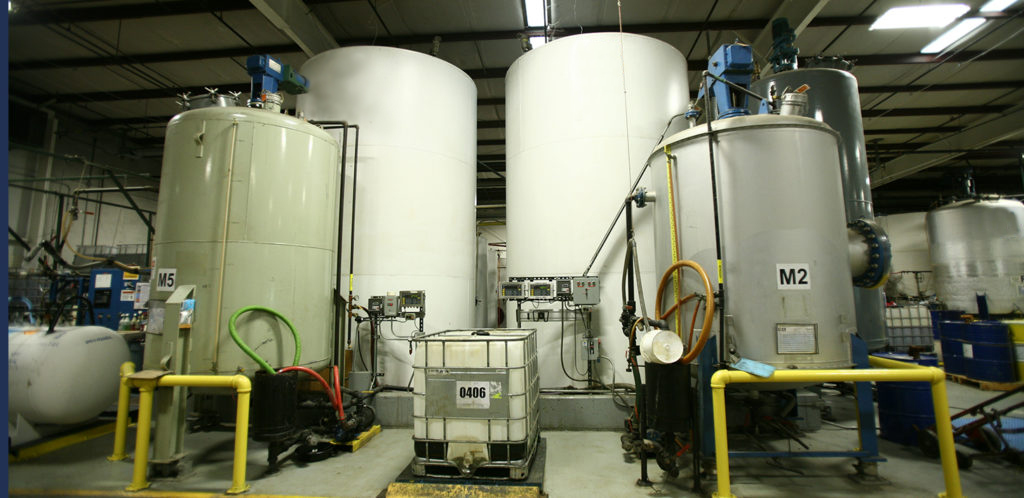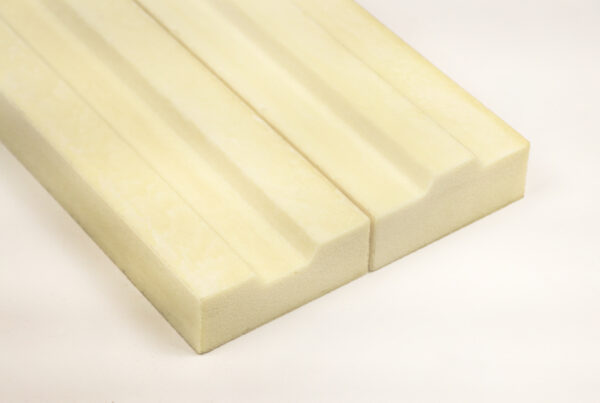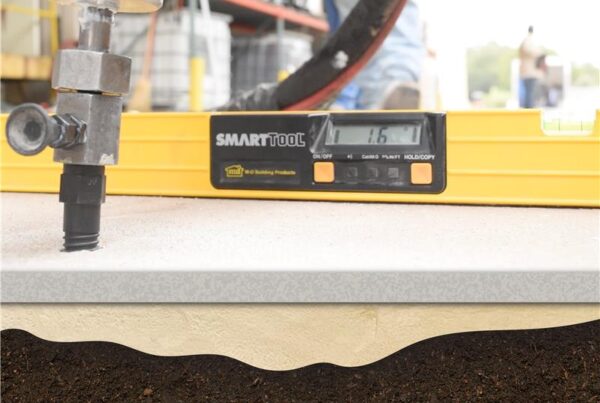The foam that makes up the core of many modern garage doors is possible thanks to some very specific chemistry.
But solid chemistry alone is no guarantee for success.
Optimal processing conditions must be maintained to produce quality panels. If they’re not, common quality problems such as underfilling, overfilling or an array of surface defects can result.
Many foam garage door manufacturers experience unacceptable scrap rates which occur because the process parameters discussed below are not appropriately controlled. But with a better understanding of these parameters — and how they relate to one another — manufacturers can become key front-line troubleshooters that save time, money and material.
Know the 4 main process control parameters
In foam core garage door manufacturing, four main process control parameters impact finished product quality:
- Temperature (including storage, processing equipment and ambient)
- Dispensing rate
- Line speed (in continuous applications)
- Demold time (in discontinuous appplications)
While determining ideal process control parameters begins during process design, we’re not going to talk about specifications at any length. This resource is meant to help you understand the things you can control right nowwithout going back to the drawing board.

Temperature
Temperature might be the most difficult process parameter to control because it impacts foam garage door panel manufacturing quality at a few different stages.
Bulk storage – The two components of a foam system are usually stored in large tanks in ambient conditions. Bulk storage temperature is easier to manage if the tanks are inside a climate-controlled facility. But if facilities lack climate control or the tanks are kept outdoors, the foam components are at the mercy of frequent seasonal and daily temperature fluctuations. As temperature deviates more and more from the ideal processing range, operators’ options for correcting the problem by tweaking other process parameters significantly diminish.
Day tank storage – Prior to mixing and dispensing, foam components are kept in “day tanks.” Most modern equipment features heat exchangers in these tanks designed to regulate the temperature of the foam. But if the components enter the tanks too hot or too cold, the heat exchangers won’t do their job in time. If precursors are dispensed outside of their normal process temperature, they might not mix or dispense properly.
Processing equipment – For garage door panel foam to cure properly, the temperature of hardware such as platens, molds or conveyors must be maintained according to the foam system’s specifications. If contact surfaces are too hot, foam could cure before reaching its full rise. If they’re too cold, the foam could cure to a gummy texture and pull away from surfaces it should stick to.
Ambient – If facilities lack climate control, seasonal or daily temperature fluctuations could cause quality problems that operators must constantly work to correct. A lack of ambient temperature control could exacerbate quality problems if the other temperature parameters noted above also are not well-controlled. However, if the other temperature parameters are well-controlled, ambient temperature is less of a factor in product quality.
Dispensing rate
The amount of pour-in-place foam deposited from a mixing machine to a mold or conveyor platen can influence its expansion and curing. This rate is settled on the premise that other parameters (such as line speed, demold time and temperature) also are optimized. A common misstep is for manufacturers to observe defects like voids or underfilling in finished panels and crank up the dispensing rate in response.
That might be the right answer, but it might not. Was the temperature of the foam components or equipment too hot or too cold? Was the line speed too fast or demold time too brief?
Line speed
That same logic applies to line speed for continuous panel manufacturing. This speed is determined in advance in harmony with other process parameters and the foam’s curing characteristics.
If line speed increases without a commensurate increase in dispensing rate, there won’t be enough foam applied to fully fill panels and underfilling will result. Even if dispensing rate is adjusted to match a faster line speed, higher speed could result in foam that never fully cures.
Conversely, if line speed slows, too much foam could be dispensed onto the conveyor unless the dispensing rate also is dialed down. Lower speed could also extend the curing time beyond what a foam system requires, potentially resulting in over-cured foam.
Demold time
Demold time — which refers to the amount of time foam is held in a fixture to cure — is the discontinuous manufacturing version of line speed. Essentially, the same problems described in the line speed section can occur if demold time is adjusted upward or downward.

Take a holistic approach to troubleshooting
Foam garage door panel manufacturing is a complicated process where many variables must be tightly controlled. They must also be collectively optimized.
Fortunately, most quality problems can be solved by making educated process parameter adjustments. It’s merely a matter understanding the why behind a problem.
But if problems still persist, the technical support and product guidance offered as part of our high-service business model is just one reason why a relationship with Foam Supplies is different. Are you experiencing persistent quality issues? Are process parameter adjustments not helping? It might be time to get some help. Contact a technical expert here.




